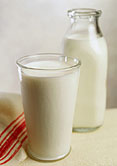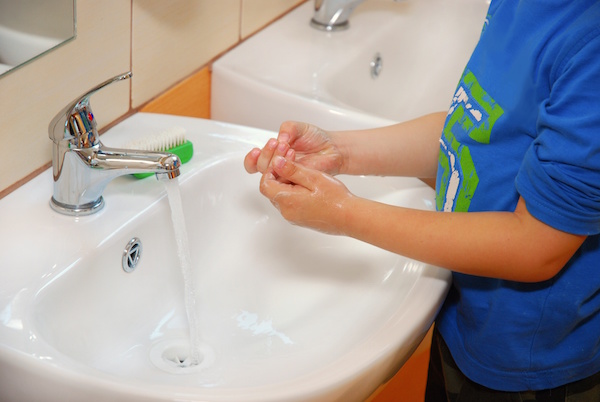
MONDAY, March 21 (HealthDay News) — Kids who are allergic to milk may be able to quickly develop tolerance by coupling the allergy medication Xolair with a gradual increase in their exposure to milk, known as sensitization, a new study suggests.
An estimated 3 million children in the United States are allergic to some kind of food. Milk allergy is the most common food allergy among children, affecting about 2.5 percent of those younger than 3.
Treatment based on sensitization alone — exposing children to small but progressively greater amounts of the food substance to which they’re allergic — is often successful. But it’s usually a slow process that runs the risk of provoking allergic reactions.
Seeking a faster and safer method, the research team tested a dual approach — sensitization along with Xolair (omalizumab), a drug that blocks the action of IgE, a natural substance in the body that causes allergic reactions — in a small group of children. Their findings were to be presented Monday in San Francisco at the annual meeting of the American Academy of Allergy, Asthma and Immunology.
Experts note that research presented at meetings should be considered preliminary because it has not been subjected to the rigorous scrutiny given to research published in medical journals.
Treating milk allergies “could change a child’s lifestyle for the better,” Dr. Dale Umetsu, a pediatrics professor at Harvard Medical School and Children’s Hospital Boston and a co-author of the study, said in a news release from the Stanford University School of Medicine, which also participated in the research. “These children had significant milk allergy, and were unlikely to outgrow it without some type of treatment.”
“While we recognize that larger trials are necessary, these results are very promising and suggest that a rapid and safe method of food desensitization might be available for patients in the near future,” Umetsu said.
For the study, the children were first given injections of Xolair. Over the next seven to 10 weeks, they were exposed to incrementally increasing amounts of milk, while continuing treatment with the drug. Then, the medication was stopped but the desensitization — in the form of drinking about two ounces of milk a day — continued for another eight weeks.
The researchers noted that all of the children completed the full treatment process, which they attributed to adding an allergy medication to the desensitization regimen. The drug acts as a “protective blanket,” Dr. Kari Nadeau, an allergist and assistant professor of pediatrics at Stanford and a study co-author, said in the news release.
“Without this treatment, 10 to 20 percent of people who start oral immunotherapy drop out, in part due to intolerable allergic reactions early in the treatment,” he said.
At the end of treatment, nine of the eleven children could consume up to 12 ounces of dairy products a day with little or no difficulty, the study found.
“When you try to go on a diet that is completely free of milk, it is very difficult because many foods have a little bit of milk protein in them,” Nadeau noted. “From a practical standpoint, this treatment allowed these patients to increase all types of milk products in their diets: They were able to eat yogurt, cheese, bread, a muffin. One patient in our study said, ‘I can finally eat goldfish crackers.'”
Dr. Jonathan Field, director emeritus of the pediatric allergy immunology clinic at New York University School of Medicine/Bellevue Medical Center in New York City, described the findings as both “interesting” and “encouraging.”
“The caveat is that so far Xolair hasn’t been approved for children under 12,” he noted. “But immunologically, it makes sense. And this method may promote a safer food desensitization process, which can sometimes entail risk. So anything that can make it a safer process would be quite welcome.”
More information
The Nemours Foundation has more on milk allergy in children.

